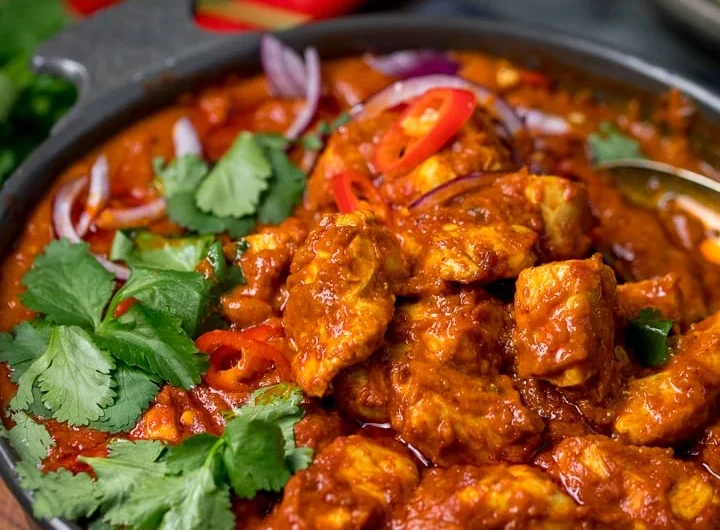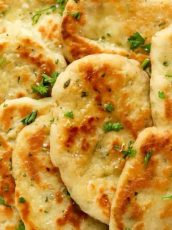Chicken Madras is a spicy and aromatic dish that has become a favorite for curry enthusiasts worldwide. Known for its bold flavors, this dish pairs succulent chicken with a rich and vibrant sauce. The key lies in the spices and techniques that create a velvety texture and depth of flavor. Perfect for any day, especially a cozy Friday night, this recipe is both simple and rewarding to make at home.
What Defines a Madras Curry?
Madras curry is a robust Indian dish characterized by its heat, tanginess, and deep red sauce. The vibrant color is thanks to ingredients like paprika and chili. Unlike milder curries, Madras brings a slight tang, often derived from tamarind, and an earthy complexity from fenugreek and cinnamon.
Key Features:
- Spicy and Aromatic: Madras curry is spicier than many curries, though you can adjust the heat.
- Smooth Sauce: Blended onions and passata create a creamy, uniform texture.
- Tangy Undertones: Tamarind adds a subtle sourness that balances the spices.
Essential Ingredients
Here’s what you’ll need to bring this dish to life:
- Chicken: Boneless breast or thigh pieces work well.
- Spices: Madras curry powder, paprika, cinnamon, and ground fenugreek are key.
- Aromatic Base: Onion, garlic, and ginger form the flavorful foundation.
- Tamarind Paste: For a tangy kick.
- Passata and Coconut Milk: These ensure the sauce is smooth and luscious.
How to Customize the Heat Level
Madras curry is known for its spiciness, but the heat can be tailored to your preference. Use milder curry powder if desired, or amp it up with fresh chilies or hot chili powder.
Step-by-Step Guide to Creating the Perfect Madras Curry
- Prepare the Aromatic Base: Blend onion, garlic, and ginger into a paste. This ensures the sauce is smooth and well-integrated.
- Cook the Aromatics: Fry the paste in ghee or oil over high heat. The edges should start to brown, releasing a fragrant aroma.
- Add the Chicken: Toss the chicken into the pan and cook until sealed. This step locks in the juices.
- Incorporate the Spices: Reduce the heat and add cinnamon, Madras curry powder, paprika, ground fenugreek, tamarind paste, salt, and pepper. Stir constantly for about a minute to toast the spices and release their flavors.
- Create the Sauce: Pour in passata and tomato puree. Bring it to a boil, then stir in coconut milk for a creamy finish.
- Simmer to Perfection: Let the curry simmer gently for about 10 minutes. This allows the flavors to meld beautifully.
Garnishing and Serving Suggestions
- Toppings: Garnish with fresh coriander, sliced red chilies, and thinly sliced red onion.
- Sides: Serve alongside fluffy boiled rice and steamed greens for a complete meal.
Variations to Explore
- Chicken Tikka Madras: Marinate the chicken in a yogurt-based tikka paste for added depth. Grill or broil before adding to the sauce.
- Beef or Lamb Madras: Swap chicken for tender beef or lamb. Adjust cooking times accordingly for optimal tenderness.
Slow Cooker and Make-Ahead Options
- Slow Cooker: After cooking the spices and chicken, transfer everything to a slow cooker. Add the coconut milk and cook on low for 3-4 hours.
- Make Ahead: This curry can be prepared up to two days in advance. Store in the refrigerator and reheat on the stovetop, adding a splash of water if needed.
Storage Tips
- Refrigeration: Store in an airtight container for up to 2 days.
- Freezing: Cool the curry quickly and freeze in individual portions. Defrost overnight in the refrigerator before reheating.
Nutritional Breakdown
While Chicken Madras is rich in flavor, it also offers a good balance of protein, healthy fats, and spices. Here’s a quick look at the nutrition per serving (without sides):
- Calories: 466 kcal
- Protein: 40g
- Carbohydrates: 18g
- Fat: 27g






